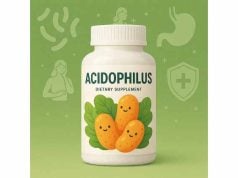
Welcome to a comprehensive look at Eyebright, an herbal ally often hailed for its potential to enhance vision and contribute to overall eye health. In today’s busy world, our eyes endure heavy demands—from constant screen exposure to environmental pollutants and the natural strains of aging. Many people look to natural supplements to keep their vision clear and comfortable. This article delves into Eyebright’s background, its eye-supporting properties, and practical ways to incorporate it into your daily wellness plan. Whether you’re curious about its traditional use or the latest scientific findings, read on to learn how Eyebright may help keep your eyes feeling their best.
Table of Contents
- What Exactly Is Eyebright?
- Ways Eyebright Can Elevate Your Vision
- Core Advantages of Eyebright for Eye Wellness
- Using Eyebright to Achieve Optimal Results
- Notable Scientific Studies and Findings
- Frequently Asked Questions
- References and Sources
What Exactly Is Eyebright?
Eyebright (Euphrasia officinalis) is a modest yet fascinating herb recognized primarily for its historical use in promoting eye wellness. Its name, appearance, and traditional applications all connect to vision support—an association that extends back centuries. Often encountered in grassy or meadow-like terrains across Europe and parts of North America, Eyebright has a small, delicate blossom with markings that seem almost like tiny “eyes” on the petals. Over time, people came to believe that these botanical patterns were nature’s hint at the herb’s potential benefits for ocular health.
Beyond folklore, Eyebright contains valuable phytochemicals that have drawn the attention of herbal enthusiasts and scientific researchers alike. One notable group of compounds is the iridoid glycosides, commonly believed to have anti-inflammatory qualities. The herb also features flavonoids such as luteolin and quercetin, recognized in modern nutritional science for their antioxidant effects. Together, these natural components may help counteract oxidative stress in the eyes, which can negatively impact vision.
Historically, Eyebright has often been brewed into teas or used topically for mild eye irritations. Although it has never been a mainstream remedy in the way that chamomile or peppermint might be, Eyebright’s specialized reputation has endured through generations. Herbal experts included Eyebright in a range of products designed to soothe redness, dryness, and minor inflammation around the eyes, particularly before the age of modern medical practices.
Today, Eyebright can be found in multiple forms: dried leaves for tea or tinctures, capsules, and sometimes as an ingredient in specialized eye drops. Each formulation may offer varied advantages depending on the consumer’s needs. For instance, dietary supplements with Eyebright can be taken regularly, providing a consistent intake of its bioactive compounds. Teas and topical preparations might be reserved for short-term or localized support.
In terms of taste, Eyebright tea is mildly astringent and earthy, rarely overpowering but not as sweet as some other herbal beverages. This gentle taste profile makes it easy to combine with companion herbs like chamomile or fennel, resulting in a blend that soothes the throat and, historically, was believed to bring relief to tired eyes.
As you explore Eyebright, you will discover a wealth of herbal wisdom that underscores its potential role in ocular well-being. Although it is no panacea for every visual problem, it offers a natural path for people looking to bolster eye comfort and overall vision health. The key lies in understanding the best forms, proper usage, and how it might align with your personal wellness routine.
Ways Eyebright Can Elevate Your Vision
Eyebright Improves Vision—this phrase, though it sounds like a marketing slogan, is rooted in the belief that this humble herb may bolster ocular function through multiple pathways. When thinking about how Eyebright might affect your eyes, consider the multifaceted nature of visual health itself. Various factors—from dryness and inflammation to inadequate tear production—can degrade vision quality. By addressing some of these concerns, Eyebright has earned its reputation as a vision-supportive botanical.
Potential Anti-Inflammatory Effects
One of Eyebright’s most often-cited mechanisms is its potential to ease inflammation. Certain compounds found in the plant, such as aucubin (an iridoid glycoside), may help modulate inflammation in the body. When the delicate tissues of the eye become irritated or inflamed—be it from environmental stresses, digital screen usage, or allergens—the resulting discomfort can range from minor redness to pronounced dryness or tearing. By mitigating these inflammatory responses, Eyebright may help create an environment in which the eyes can function more comfortably and effectively.
Counteracting Eye Fatigue
In the modern era, hours spent gazing at computer screens, televisions, or mobile devices has become the norm for many. Extended screen time can lead to a decline in blink rate and insufficient lubrication of the eyes. These factors often produce symptoms of eyestrain, including blurred vision, headache, and a feeling of heaviness around the eyes. Eyebright’s traditional use as a tea or gentle compress, combined with eye-friendly vitamins and other supportive measures (like taking regular screen breaks), may contribute to easing this digital fatigue.
Reinforcing Tear Film Stability
A healthy tear film is fundamental to clear, sharp sight. Tears not only provide the needed moisture to keep your eyes comfortable but also maintain an even surface over the cornea, which is essential for focusing light accurately. Various plant compounds in Eyebright may support the production of a balanced tear film, reducing dryness and helping to preserve normal vision. Though direct scientific research in this area remains limited, anecdotal accounts persist about Eyebright’s ability to keep the eyes moist and reduce the gritty sensations linked with dryness.
Possible Antioxidant Action
Eyebright also contains flavonoids—chiefly luteolin and quercetin—that can function as antioxidants. Oxidative stress is a major concern for eye health, since the eyes have a high metabolic rate and are constantly exposed to light, both of which can cause free radical formation. Over time, unchecked oxidative stress may degrade ocular tissues, contributing to various eye-related problems. Antioxidants help neutralize these free radicals, potentially preserving the integrity of your visual system in the long run.
Complementing Other Eye-Supportive Substances
Any conversation about Eyebright for eye support would not be complete without acknowledging that it often works best when combined with a well-rounded approach. Vitamins A, C, and E, as well as minerals like zinc, are indispensable for maintaining normal vision function. Omega-3 fatty acids may also keep the eyes hydrated. Eyebright may complement these nutrients by providing an additional layer of anti-inflammatory and antioxidant protection. This synergy could explain why some holistic practitioners recommend a regimen that pairs Eyebright with a balanced diet and other targeted supplements.
Holistic Eye Care
Finally, it is important to integrate Eyebright into a broader perspective on ocular wellness. Even if Eyebright’s beneficial effects are significant, they can be undermined by poor lifestyle habits. Routine eye exercises, healthy screen practices (like following the 20-20-20 rule—looking at something 20 feet away for 20 seconds every 20 minutes), and consistent hydration can elevate the baseline health of your eyes. Think of Eyebright as a partner in a holistic plan, rather than an isolated fix. Combining multiple strategies typically yields the greatest results in reducing eye strain, refining clarity, and fostering overall visual well-being.
Core Advantages of Eyebright for Eye Wellness
Eyebright Vision Benefits are numerous, evolving from the herb’s natural chemistry and the multifaceted ways in which it interacts with the ocular system. While many herbal remedies are thought to have broad health properties, Eyebright’s unique tie to eye care stands out. In this section, we’ll explore the core advantages that position Eyebright as a potentially valuable ally for maintaining clarity, comfort, and overall ocular harmony.
Alleviation of Mild Ocular Irritation
One of the most direct applications of Eyebright can be the calming of mild eye irritations. Whether the source is seasonal pollen, dusty environments, or excessive screen use, the eyes may become red, watery, or generally uncomfortable. Traditionally, herbalists prepared compresses or eyewashes made from Eyebright infusions to gently soothe these symptoms. While modern usage might differ, the principle remains: the herb’s gentle astringent and anti-inflammatory properties might help reduce minor discomfort.
Support for Visual Sharpness
Clarity of vision depends upon multiple factors, including the health of the cornea, lens, retina, and the fluid balance within the eye. Although Eyebright is not a miracle cure for severe eye disorders, many people report that consistent use helps them maintain a clear, focused viewpoint. The synergy of anti-inflammatory and antioxidant actions, along with possible tear film support, creates an environment that can help the eyes function optimally.
Promotion of Eye Comfort in Dry Climates
Those living in arid or windy conditions know how quickly eyes can become irritated or dehydrated. In these scenarios, maintaining adequate lubrication is paramount to reducing burning sensations or a gritty feeling. When used in combination with moisture-supporting habits—like drinking enough water, using humidifiers, or implementing artificial tears if recommended—Eyebright supplements or herbal teas may contribute to keeping eyes relaxed and less prone to dryness.
Potential Shield Against Environmental Stressors
The human eye contends with a constant assault of environmental pollutants: vehicle exhaust, smoke, allergens, and more. Over time, these stressors can overwhelm the eye’s natural defenses, leading to oxidative damage and periodic inflammation. Eyebright’s flavonoids, particularly luteolin and quercetin, might offer added antioxidant fortification. By assisting in the neutralization of free radicals, these compounds help reduce the negative effects that environmental elements can have on ocular tissues, thereby promoting lasting vitality in your eyes.
Holistic Integration
Eyebright for Eye Health often highlights more than just ocular physiology. Many practitioners who recommend Eyebright also emphasize its mild effects on sinus health, believing that it can support clear nasal passages and, by extension, lower sinus pressure affecting the eyes. While scientific data on this specific point is sparse, anecdotal feedback suggests that a broader sense of facial comfort can indirectly enhance the eyes. If the sinuses are congested or inflamed, it can increase pressure around the ocular area, causing discomfort and possibly minor vision changes. By potentially minimizing sinus-related tension, Eyebright can contribute to an overall feeling of ease.
Emotional and Psychological Aspects
Beyond biology, how comfortable and healthy your eyes feel can influence your emotional and mental well-being. Chronic dryness, itchiness, or blurriness can breed frustration and anxiety, particularly if you need keen vision for your occupation or hobbies. By addressing these nagging irritations, Eyebright might enhance quality of life in a subtle yet meaningful way. Think of it as part of a self-care regimen, especially beneficial when stress management or general relaxation is a priority.
Overall, Eyebright’s key advantages lie in how well it targets many aspects of eye health at once—calming inflammation, supplying antioxidants, and possibly balancing moisture levels. Though not a replacement for medical treatments or professional advice, Eyebright can be a worthy supplement in the ongoing quest for ocular vitality. If you are interested in trying Eyebright for your own eyes, maintaining an informed perspective on the herb, its effects, and its limitations will help you use it in a safe and beneficial manner.
Using Eyebright to Achieve Optimal Results
Just as each individual’s eyes have distinct needs, the best way to use Eyebright can differ based on lifestyle, health profile, and personal preferences. Though widely regarded as safe, Eyebright still requires mindful handling to ensure you gain the maximum vision benefits. Below are some practical tips and steps to guide you in selecting and using Eyebright as part of your daily routine.
Finding the Right Form
Eyebright is available in various formats, from dietary supplements to teas, tinctures, and more. Each offers a different absorption rate and concentration of beneficial compounds:
- Capsules or Tablets
- Pros: Consistent dosage, convenient for travel.
- Cons: Takes time for the body to break down and absorb; could miss out on any topical benefits if you have external eye irritations.
- Tinctures
- Pros: Generally higher concentration; easy to adjust dosage by measuring drops.
- Cons: Contains alcohol unless you purchase alcohol-free versions; taste may be strong.
- Herbal Teas
- Pros: Gentle method of consumption; the warmth can be soothing, and leftover tea may be used as a mild compress.
- Cons: A cup of tea has a lower, more diluted potency and might require multiple servings to achieve noticeable effects.
- Topical Solutions and Compresses
- Pros: Targets the eyes directly; can help alleviate puffiness or redness.
- Cons: Must be handled with strict hygiene to avoid contamination; not always easy to find commercial preparations specifically designed for the eyes.
- Eye Drops
- Pros: Direct application to the eye, potentially fast relief.
- Cons: Always check for sterile pharmaceutical-grade formulas; homemade solutions carry contamination risks.
Suggested Dosages
Because of the variability in product strength, the ideal amount can differ widely. Typically, following the label instructions on a commercial product is a prudent start. If using Eyebright in tea form, one or two cups a day is often recommended in the realm of herbal traditions. Tincture dosages might range from 1 to 2 ml daily, depending on concentration. When in doubt, it is best to consult a qualified herbalist or healthcare provider for personalized guidance, especially if you plan to use Eyebright long-term.
Best Times for Consumption
Some individuals find that taking Eyebright earlier in the day supports comfortable vision during working hours, particularly if you spend time in front of screens. Others use a final dose in the evening, especially if the eyes feel stressed or irritated after a long day. Experiment with timing to see when your eyes respond best. If you plan to use Eyebright tea or a compress, you might find a soothing routine in the evening to unwind and relax the eyes.
Complementary Practices
To fully harness Eyebright for Vision Improvement, consider pairing it with these eye-friendly habits:
- Blink Exercises: Remind yourself to blink consciously when focusing on a screen to keep your eyes lubricated.
- Warm Compresses: Applying a gentle warm compress (in addition to or instead of an Eyebright compress) can loosen tight ocular muscles and stimulate tear production.
- Hydration: Drink enough water throughout the day to maintain overall fluid balance, which is crucial for tear film stability.
- Balanced Diet: Incorporate foods rich in vitamins A and C, plus minerals like zinc, to supply your eyes with the necessary micronutrients.
Precautions and Potential Interactions
Although Eyebright is typically considered mild, it is important to be aware of potential issues:
- Allergic Reactions: If you experience unusual swelling, itching, or redness, discontinue use and consult a healthcare professional.
- Medication Interactions: If you are already on prescription medications—particularly for ocular or autoimmune conditions—talk to your doctor before adding Eyebright to your regimen.
- Pregnancy and Nursing: As with many herbal supplements, research on Eyebright’s safety during pregnancy or breastfeeding is limited. Always consult with a qualified medical professional for personalized advice.
- Eye Drop Safety: If you opt for an Eyebright-based eye drop, ensure it is a sterile formulation specifically designed for ocular use. Avoid do-it-yourself methods that could introduce bacteria to the sensitive eye area.
Proper, consistent application of Eyebright can help you glean its many advantages, but success relies on a balanced approach that respects both the herb’s capabilities and your individual physiology. Combining Eyebright with a robust eye care routine—encompassing everything from digital screen management to nutrient-rich diets—can yield a synergistic effect that keeps your vision as crisp and comfortable as possible.
Notable Scientific Studies and Findings
As interest in alternative and complementary medicine grows, researchers continue to explore the underlying science behind herbal substances like Eyebright. Although the body of research is not as extensive as for some more mainstream supplements, a handful of studies and scholarly reviews provide insights into the herb’s potential impact on eye health. Below is a closer look at some noteworthy findings and areas requiring further exploration.
Laboratory Analyses of Bioactive Compounds
Research into Eyebright’s chemical constituents shows it contains substances believed to possess antioxidant and anti-inflammatory properties. Specific molecules, including iridoid glycosides like aucubin, have captured researchers’ attention for their suspected effects on inflammatory pathways. Additionally, the presence of flavonoids (quercetin, luteolin) in Eyebright correlates with the antioxidant capacity observed in laboratory tests. These flavonoids could help safeguard ocular cells from oxidative stress—a significant factor contributing to vision issues.
Ocular Irritation and Topical Uses
Several pilot studies have focused on eye drops or compress solutions containing Eyebright. In some cases, participants reported relief from mild irritation, dryness, or redness. For instance, a small observational study in Europe noted that individuals using an Eyebright-based eye drop formula experienced a moderate decrease in eye discomfort over several weeks. The study’s limitations, such as small sample size and lack of a control group, underscore the need for larger, more rigorous trials.
Anti-Inflammatory Potential
Preclinical research, often performed on cell cultures or animal models, indicates that Eyebright extracts can suppress certain inflammatory markers. Although inflammation can be triggered by numerous factors—from infection to autoimmune responses—consistent findings hint that Eyebright could contribute to a calmer, less inflamed environment in ocular tissues. This might be particularly relevant for those dealing with allergy-related eye issues or irritations stemming from chronic dryness.
Limitations and Future Research
It is important to note that while preliminary results are promising, the research on Eyebright remains in its infancy. Many of the existing studies have methodological constraints, including small participant numbers, short durations, or lack of placebos. Furthermore, no major clinical trials have conclusively established Eyebright’s effectiveness in treating serious or complex eye conditions. As interest grows, one can hope for comprehensive studies that employ control groups, standardized dosing, and long-term follow-ups to confirm the herb’s capabilities.
Relevance for Modern Eye Care
Despite these research gaps, scientific exploration does highlight the plausible value of Eyebright for Eye Health and Vision Improvement. The presence of antioxidant and anti-inflammatory compounds alone provides strong rationale for additional, more in-depth research. Moreover, as conventional eye care increasingly integrates nutritional and preventive approaches, Eyebright stands out as a worthy candidate for further scrutiny.
Responsible Interpretation of Findings
While it’s natural to feel encouraged by existing data, it is also essential to approach Eyebright with a balanced perspective. The herb’s potential does not necessarily equate to a guaranteed fix for all eye-related conditions. Scientific findings underscore that Eyebright may be most beneficial when used as part of a holistic regimen, emphasizing regular check-ups with an eye care professional, adequate rest, protective eyewear, and a healthy diet. Ultimately, each of these elements is crucial to supporting and preserving optimal eyesight in the face of daily stresses and potential age-related changes.
Frequently Asked Questions
Is Eyebright safe for long-term use?
In most cases, Eyebright is considered safe for extended use when consumed in recommended amounts. However, everyone’s physiology differs. Individuals with existing eye conditions or those using prescription medications should seek professional advice before adopting Eyebright as a long-term supplement.
Can Eyebright eye drops replace prescription treatments?
No. While Eyebright eye drops might soothe mild irritations, they are not a replacement for prescribed medical interventions. Always consult an eye specialist for guidance, especially if you have ongoing eye issues or suspect an underlying condition that requires targeted therapy.
Does Eyebright help with digital eye strain?
Many users report relief from eye strain linked to prolonged screen time. Eyebright’s antioxidant and anti-inflammatory compounds may be supportive, particularly if incorporated into a routine that includes regular screen breaks, proper lighting, and exercises to reduce visual fatigue.
Are there any side effects of taking Eyebright?
Side effects are uncommon but can include mild gastrointestinal discomfort or, in rare cases, allergic reactions like itching or swelling. If you notice any adverse symptoms after starting Eyebright, discontinue use and consult a healthcare provider for personalized advice.
How long does it take to see results?
Response times vary. Some people experience a quick sense of relief, particularly when using compresses or drops. Others may need several weeks of consistent supplementation before noticing improvements in ocular comfort and clarity.
Can pregnant or breastfeeding women use Eyebright?
Due to limited research on the safety of Eyebright during pregnancy or nursing, it’s best to avoid it unless directed by a qualified healthcare professional who can weigh potential risks and benefits based on your specific situation.
Does Eyebright really improve vision permanently?
Eyebright may support eye health and help maintain clarity, but it is not documented as a permanent fix for pre-existing visual impairments. Consider it one element in a broader strategy that includes good nutrition, regular eye exams, and possible other medical interventions.
References and Sources
- European Medicines Agency – Monographs on traditional herbal medicinal products, which include historical uses and safety information for numerous plants, including Eyebright.
- Journal of Ethnopharmacology – Various studies exploring the anti-inflammatory and antioxidant properties of herbal extracts.
- Phytotherapy Research – Peer-reviewed articles detailing the effects of flavonoids and iridoid glycosides found in Eyebright.
- National Library of Medicine (PubMed Database) – A resource for academic papers that mention clinical trials and other relevant data on Eyebright.
- Professional Herbalist Compilations – Collections of anecdotal and historical evidence supporting Eyebright’s use in traditional eye care.
Disclaimer:
The information presented in this article is for educational purposes and should not replace professional medical advice or treatment. Always consult with an eye care specialist or healthcare provider for personalized guidance, especially if you have a medical condition or are taking any medications.
If you found this information helpful, please share it on Facebook, X (formerly Twitter), or your favorite social platform. We appreciate your support and invite you to follow us for more insights into supplements, wellness tips, and eye health discussions.










